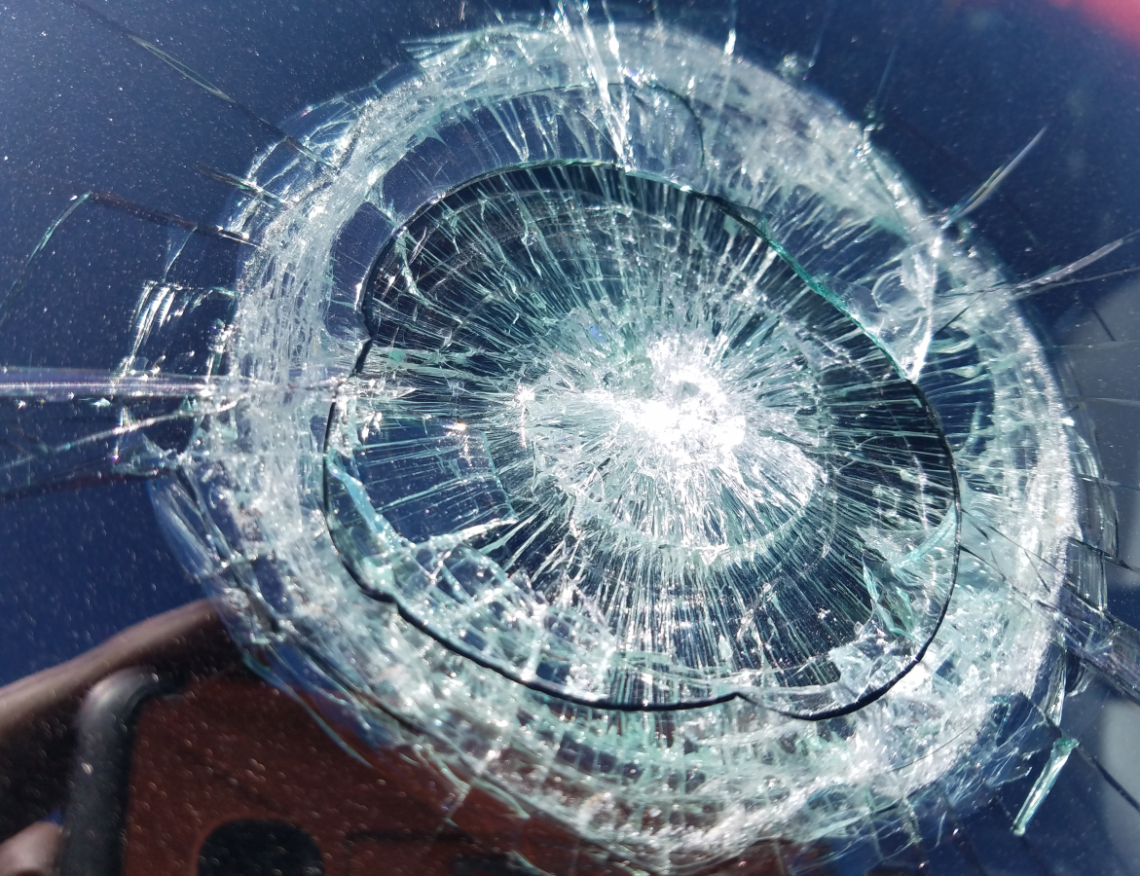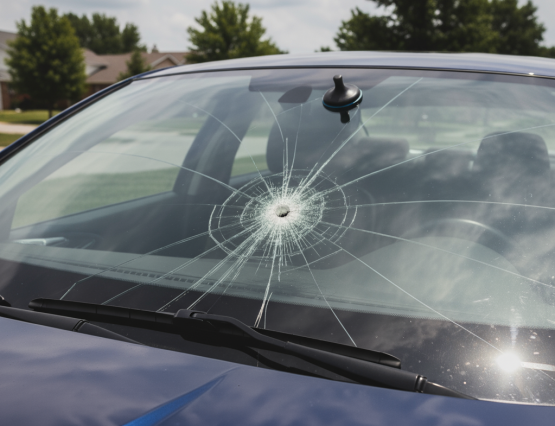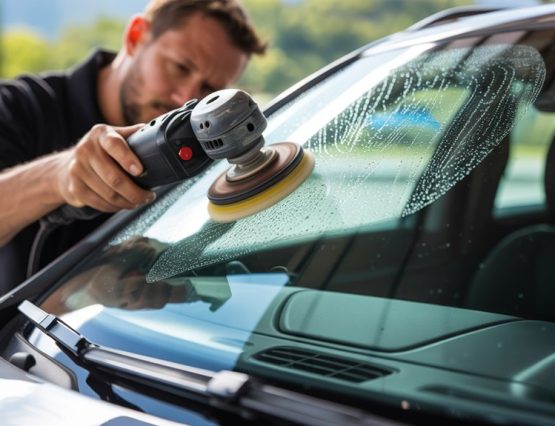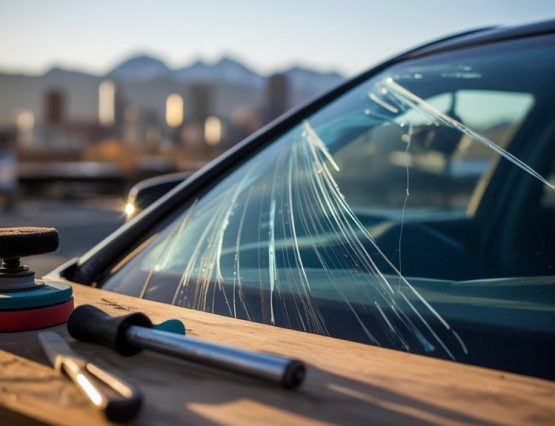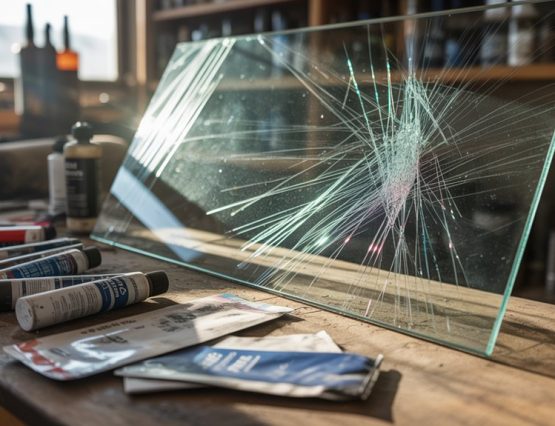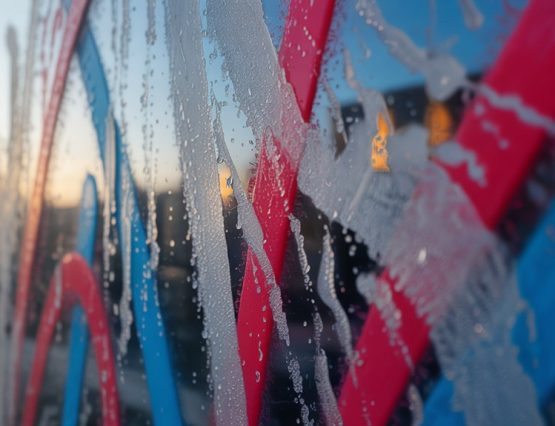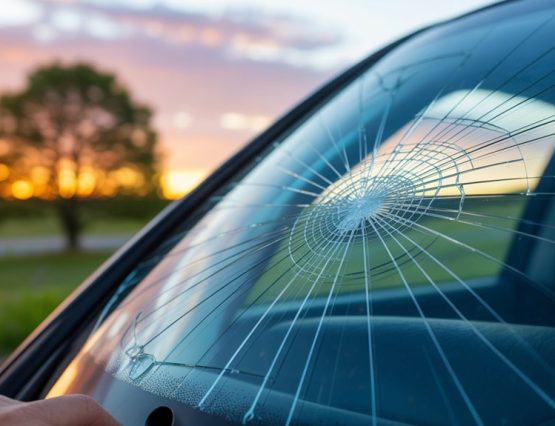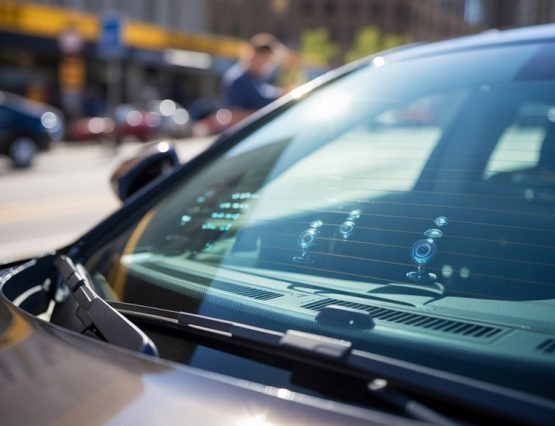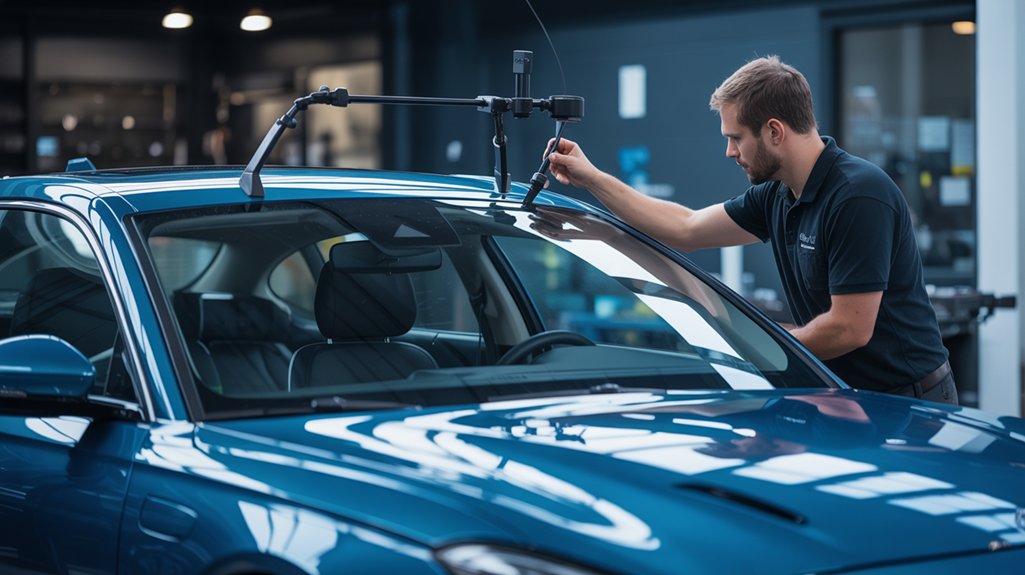
Have you ever thought about how crucial auto glass calibration is for your vehicle? It’s not just about replacing a windshield; it’s about ensuring that advanced safety features work flawlessly. If these sensors are misaligned, even slightly, it can jeopardize your safety on the road. So, what exactly does the calibration process entail, and how does it affect your driving experience? Let’s explore what you need to know.
Key Takeaways
- Auto glass calibration aligns sensors essential for advanced driver-assistance systems (ADAS) to function correctly after windshield replacement.
- Proper calibration ensures safety features like automatic emergency braking and lane departure warnings work as intended.
- Small misalignments during calibration can significantly compromise vehicle safety, leading to potential accidents.
- Signs of needed calibration include non-responsive safety features, dashboard warning lights, and unusual vehicle behaviors.
- The calibration process involves thorough inspection and adjustment of sensors using specialized tools to guarantee optimal performance.
Understanding Auto Glass Calibration
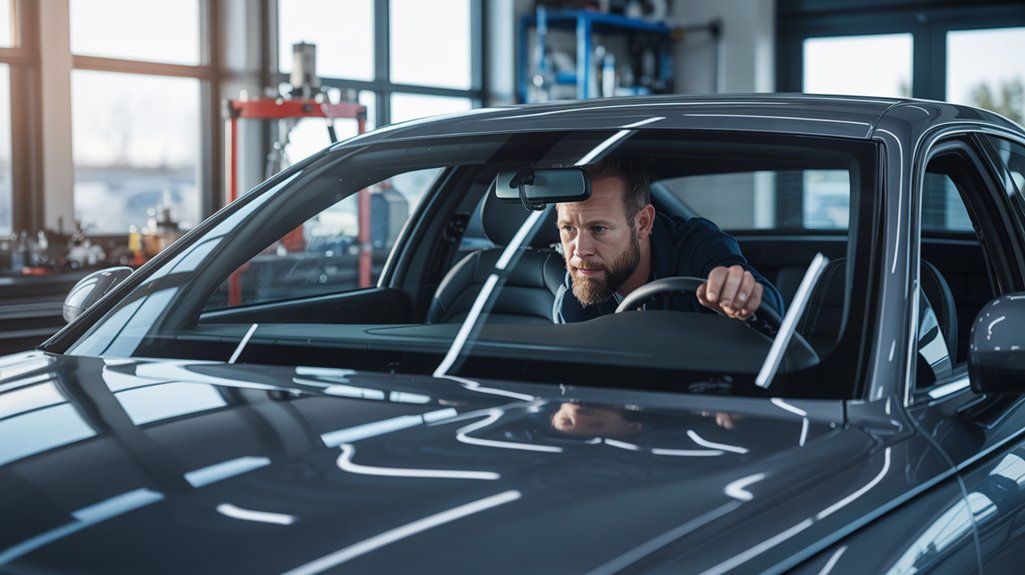
Auto glass calibration is essential for ensuring your vehicle’s safety features function correctly after a windshield replacement or repair.
When you replace your windshield, the advanced calibration technology used helps align the sensors that support features like lane departure warnings and automatic emergency braking.
If these sensors aren’t properly aligned, you risk compromising your vehicle’s safety systems, which could lead to accidents.
You mightn’t realize that even small misalignments can affect how your car responds to potential hazards.
That’s why it’s crucial to have a professional handle the calibration process.
By doing so, you ensure that all safety features work as intended, giving you peace of mind while driving.
Don’t overlook the importance of proper sensor alignment after any glass work.
The Importance of ADAS in Modern Cars
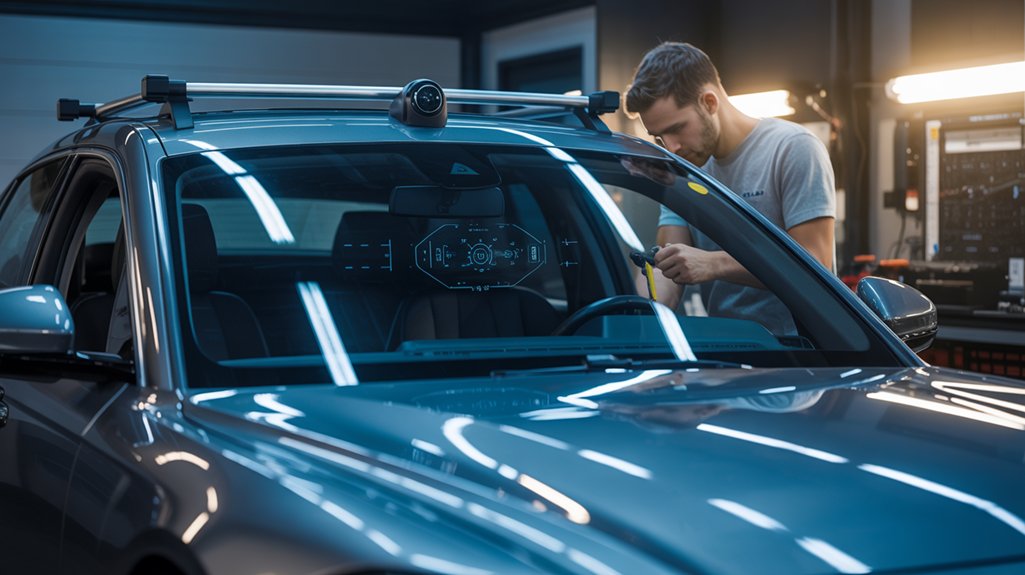
As vehicles become increasingly sophisticated, understanding the importance of Advanced Driver Assistance Systems (ADAS) is crucial for every driver. These ADAS technologies significantly enhance your driving experience by providing essential safety features that help prevent accidents. From adaptive cruise control to lane-keeping assistance, these systems work together to keep you safe on the road.
Here’s a quick look at some key ADAS technologies and their benefits:
| ADAS Technology | Safety Feature | Benefit |
|---|---|---|
| Adaptive Cruise Control | Maintains safe distance | Reduces collision risk |
| Lane Departure Warning | Alerts when drifting from lane | Enhances lane keeping |
| Automatic Emergency Braking | Activates brakes in emergencies | Minimizes impact of collisions |
Understanding these features can truly make a difference in your driving safety.
How Windshield Replacement Affects Calibration
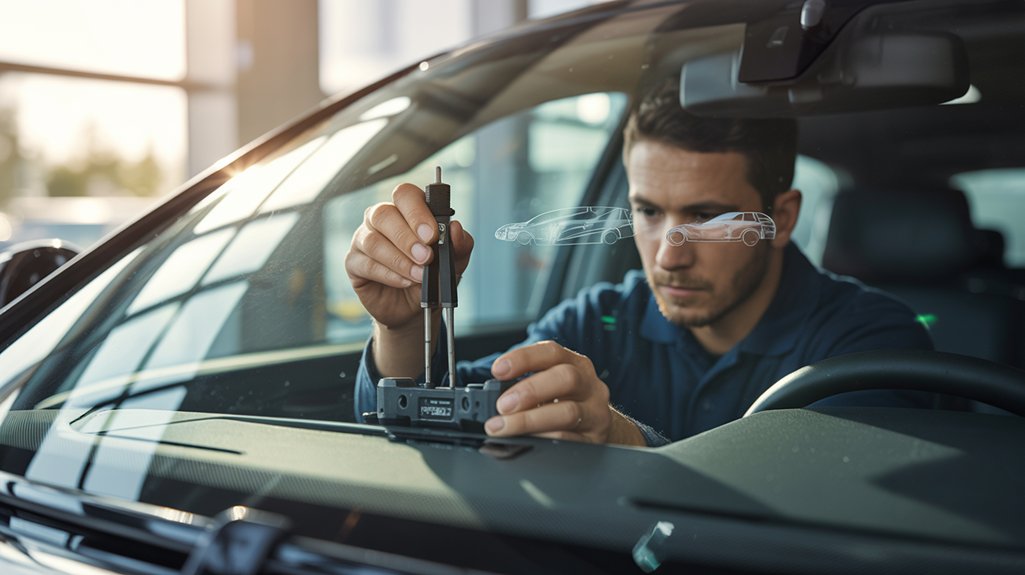
When you replace your windshield, it’s crucial to consider how this process affects the calibration of ADAS features.
Windshield sensors play a vital role in the proper functioning of these advanced systems, including lane departure warning and adaptive cruise control. If the sensors aren’t accurately calibrated after a replacement, the performance of these features can be compromised, leading to potential safety risks.
Calibration accuracy is essential for ensuring that the sensors detect objects and respond appropriately. If you’ve recently replaced your windshield, it’s wise to have the calibration checked, even if everything seems fine.
Taking this step helps maintain your vehicle’s safety and performance, ensuring your ADAS systems work as intended. Don’t overlook this important aspect of windshield replacement!
Signs That Your Vehicle Needs Calibration
How can you tell if your vehicle needs calibration? Look out for specific calibration indicators that suggest something’s off.
If your advanced safety features—like lane departure warnings or automatic emergency braking—aren’t responding as they should, it could signal sensor misalignment. Additionally, if your dashboard displays warning lights related to these systems, that’s another red flag.
You might also notice unusual behavior, such as erratic steering or inconsistent braking. These signs indicate that your vehicle’s sensors may not function properly due to misalignment.
If you experience any of these issues, it’s important to get your vehicle assessed for calibration to ensure your safety on the road. Don’t ignore these signals; they could keep you safe.
The Calibration Process: What to Expect
Understanding the calibration process is essential for ensuring your vehicle’s advanced safety features function correctly. When you take your vehicle in for calibration, expect a thorough inspection of the auto glass and its sensors.
Technicians use specialized calibration tools to assess and adjust sensor alignment, ensuring they communicate accurately with your vehicle’s systems. They’ll often start by connecting diagnostic equipment to check for any error codes, followed by physical adjustments to the sensors.
Depending on your vehicle, the process may require both static and dynamic calibration methods. After calibration, you’ll receive a report confirming the adjustments made. This ensures that your safety features, like lane departure warnings and automatic braking, work as intended, keeping you safe on the road.
Frequently Asked Questions
How Often Should Auto Glass Calibration Be Performed?
You should perform auto glass calibration after any windshield replacement or significant impact. Regular safety assessments recommend checking calibration frequency, ideally every year, to ensure your vehicle’s advanced safety features function properly and keep you safe.
Can I Drive My Car Before Calibration Is Complete?
You shouldn’t drive your car before calibration’s complete. It’s crucial for safety concerns; improper calibration can affect your vehicle’s advanced systems. Prioritizing calibration ensures your vehicle operates correctly and keeps you safe on the road.
Does Auto Glass Calibration Affect Insurance Claims?
Yes, auto glass calibration affects insurance claims. If calibration accuracy isn’t met, insurers might question damage assessments during insurance processes, potentially delaying claims or affecting coverage. It’s essential to ensure proper calibration for a smooth claims experience.
What Tools Are Used for Auto Glass Calibration?
For auto glass calibration, you’ll need specialized calibration equipment and diagnostic tools. These instruments accurately align the sensors and cameras in your vehicle, ensuring everything functions correctly for safety and performance.
Are There Any DIY Methods for Auto Glass Calibration?
You might think about DIY techniques for auto glass calibration, but it’s crucial to understand calibration’s importance. Improper methods could compromise safety systems, so professional calibration is often the best route for ensuring accuracy and reliability.
Conclusion
In today’s vehicles, auto glass calibration isn’t just a technical detail; it’s vital for your safety. Proper calibration ensures that advanced driver assistance systems function as intended, protecting you and your passengers on the road. If you’ve had your windshield replaced or notice any warning signs, don’t overlook the need for calibration. Taking this step not only boosts your confidence behind the wheel but also significantly reduces the risk of accidents. Prioritize your safety—get your auto glass calibrated.

